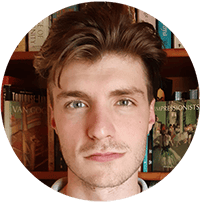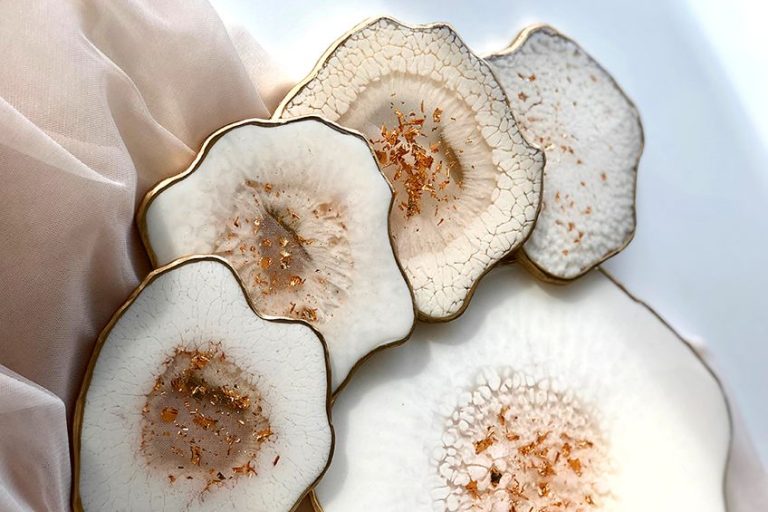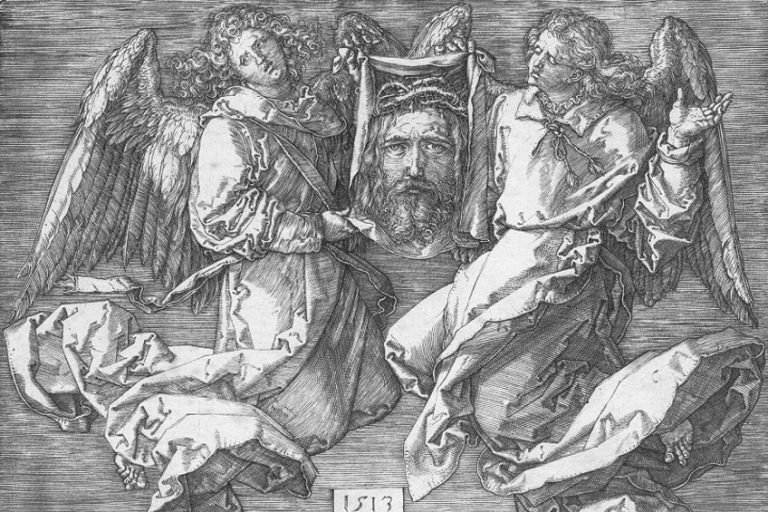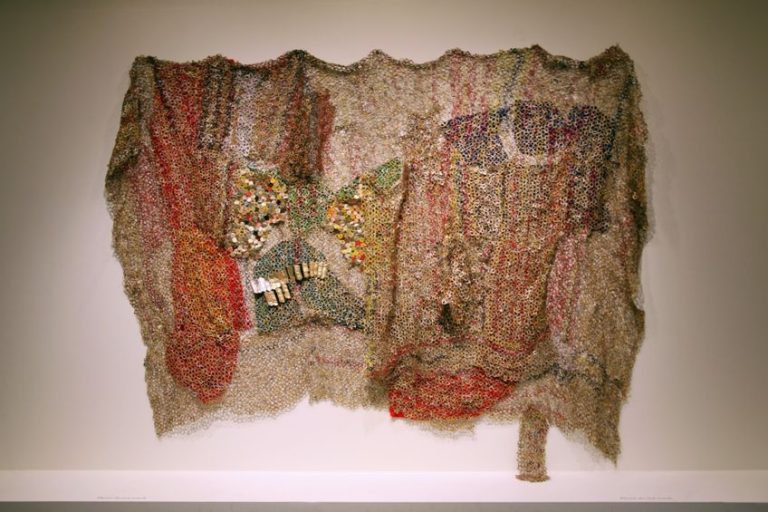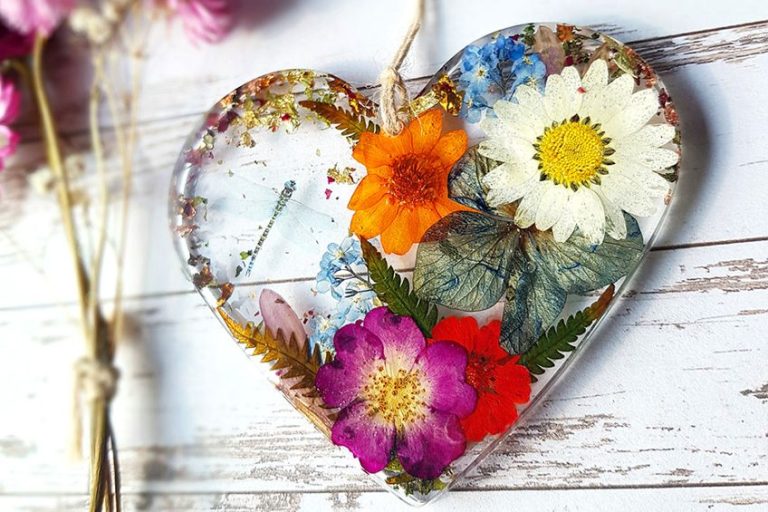Celtic Knot – The History and Symbolism Behind Celtic Knots
You have probably encountered Celtic knots at some point in your life, as a tattoo, jewelry design, or emblem, however, in most cases, the use of Celtic knot designs are rarely explained in terms of their symbolism and purpose. In this article, we will unpack the meaning and history behind Celtic knots and review the different types of Celtic knots. Read on for more about the symbolism behind these Celtic artworks.
An Introduction to Celtic Knots
Celtic knots are patterned and often interlaced designs that have their roots in the Celtic civilization, who thrived around the beginning of the second century. Celtic knots have become fundamental symbols of Irish heritage and appear in almost all arenas of design in the West. Since the 8th century, Irish high crosses promoted various Celtic designs and biblical scenes to teach Irish communities about the Gospel. These knots have struck a chord with millions around the world but few get to enjoy and explore the true insights hidden within these magnificent ancient symbols.
What Is a Celtic Knot?
Celtic knots refer to a number of related styles and images derived from ancient designs. They form part of the larger family of Celtic symbols and are not dissimilar to ancient knotwork from other civilizations in the world. The vast historical record of knotwork from across the globe does not imply that Celtic knots are not unique.
Celtic knots are commonly understood as ancient Celtic designs and motifs pioneered by early Celtic artists, who originally worked with strings and cords.
These twisting strands have an interlaced pattern and are characterized by their continuous looped designs that showcase forms without a definitive start or end. This differentiates Celtic knots from other similar Celtic or non-Celtic lace patterns with loose ends, and often symbolizes animals or natural elements. On the other hand, Roman and Germanic traditions in knotwork tend to exhibit start and end points with loose or frayed edges.
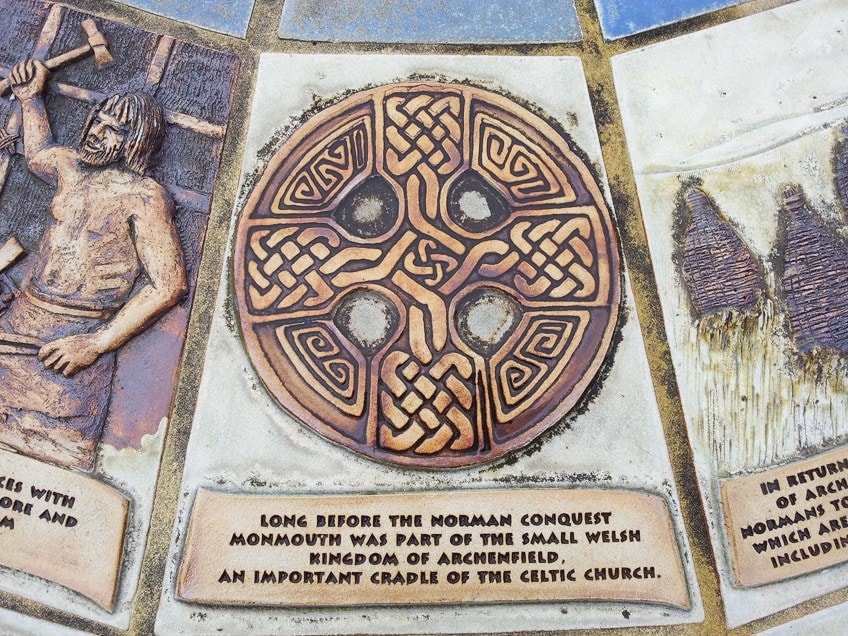
Like most symbols or artworks from the ancient world, Celtic knots offer many meanings for us to explore. While each type of Celtic knot symbolizes something unique, their core meanings tend to intersect. Even though scholars have arrived at various conclusions, Celtic knot meanings revolve around metaphors about the continuity of life and nature, as well as the connectivity between the physical and spiritual world. The twisting and unending strands uphold a much deeper significance than we can perceive today.
Celtic knotwork originated from the Celtic civilization and is closely associated with their culture and spiritual practices, such that it has become a crucial part of Irish and English history.
The Celts inhabited multiple parts of Europe and their art reflected a mix of influences and styles. Many associate Celtic knotworks closely with the Insular Celts, who were based in the British Isles but all Celtic groups exhibited similar representations and imagery. These groups were found as far as Gaul and Iberia in Southern Europe to the Alps and as far as Anatolia. From the simplest designs to the most complex variations, below, we will further unpack the history of Celtic knots.
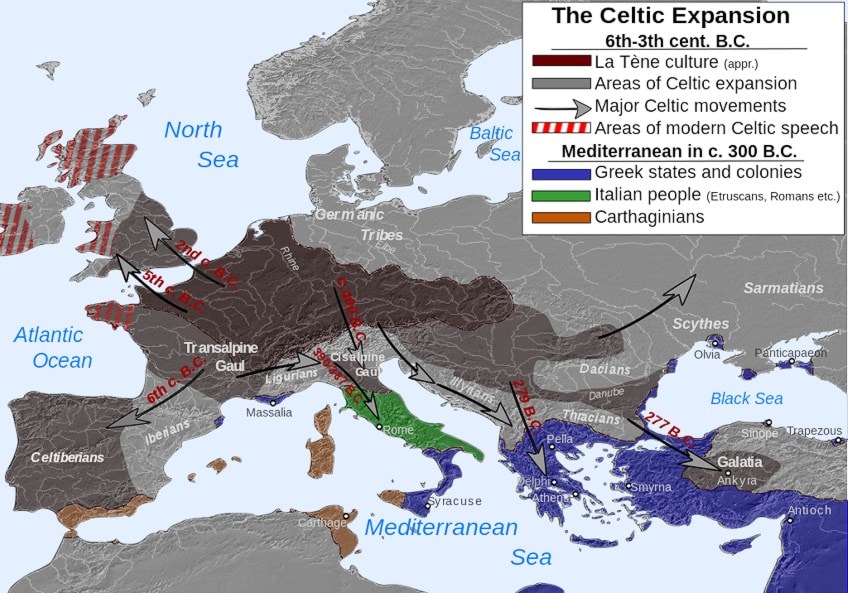
Celtic knots can consist of a single strand or multiple intertwined strands. There are several main types of Celtic knots, many of which may look familiar to you due to their sustained popularity and appeal in the present day. The beauty of Celtic knots is reflected in how humans have preserved the art form and continue to appreciate it.
But what sets Celtic knots apart from other examples of ancient knotwork?
As previously mentioned, knot art has been around since at least 3000 BCE, which was long before the rise of the Celtic civilization. To answer this question, it is important not to treat different types of knotwork as better or worse than one another, but to rather understand them as part of a larger art form. To further unpack this, we will dive into the history of Celtic knot art below.
The History of Celtic Knots
You may wonder how we came to learn so much about Celtic knots, especially since the answers lie so far back in the past. The history of the Celtic knot is an ongoing debate among historians and archaeologists. It has also been important in distinguishing Celtic knots from various other types of knotwork across the ancient world. Celtic knots have, for centuries, drawn from ancient Celtic symbols to offer people insight into the relationships we foster with each other.

The official story of Celtic knots begins in the year 400 CE, around the time when Christianity was spreading rapidly across the British Isles for the first time. The history of Celtic knots is thus divided into Christian and pre-Christian periods. Proponents of the pre-Christian theory suggest estimated dates that range as far back as 500 CE, when the first Celtic knots appeared. The Celts made use of knots for a number of reasons but primarily used them as a form of representation, often laden with religious and social motifs.
The Christian historical narrative suggests that Celts began to produce knots only after Christianization from 400 BCE onwards. But, why is there so much confusion over the origin of Celtic knot art?
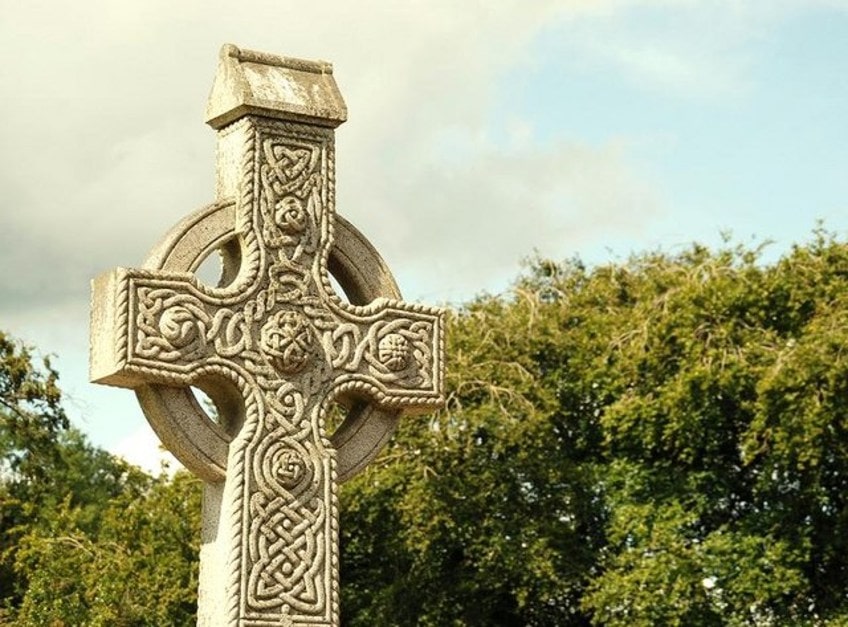
The uncertainty surrounding the dating of Celtic knots was a result of conflict over the concept of oral history. Similar to many African artifacts, historians sometimes find it difficult to confidently date items because of the tradition of keeping an oral history. This type of history is passed down from generation to generation through word of mouth, placing less emphasis on written records. Thus, the true beginnings of Celtic knots may forever be subject to mystery and debate. Some have proposed that the early Celtic religion was strict and such knots were the only art form allowed to be produced.
Celtic knots and ancient knotwork became highly popular after the 400s, and influenced architecture and art across Europe and the Middle East. Loop and interlace techniques became pivotal at this time, while earlier knots commonly exhibited spiral and step patterns.
The popularity of Celtic knots was driven by the way they vividly represented the notion of interconnection, which for Celtic cultures, was the very fabric of life. In this sense, they showcased elements that any culture can appreciate and understand. As Celtic knots spread, they also adopted cultural and regional changes in their designs, which is why Celtic knots found in Ireland, Italy, and Gaul are different in style and design.
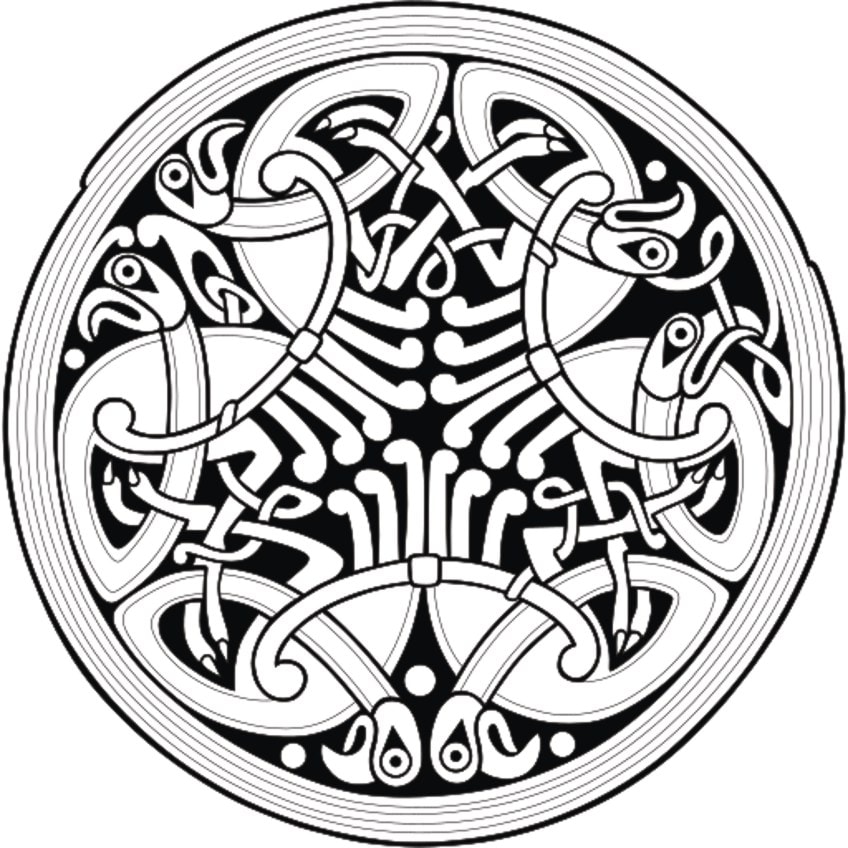
One critical artifact in the history of Celtic knots is the stunning Book of Kells, which was produced around the year 800 CE. The Book of Kells is a religious text written in Latin, comprised of gospels, descriptions, and elaborate decorative art. Within it, some of the most detailed historical examples of Celtic knots have been found. Its imagery resembles great energy and vibrancy, set in a colorful Christian symbolism, and beautified by the presence of all sorts of interlaced Celtic knots. It is currently held at the Trinity College of Dublin and even inspired a film in 2009.
Other vital Celtic knot texts include the Lindisfarne and St. Teilo Gospels. Almost every capital letter in these books are decorated with Celtic knot motifs.
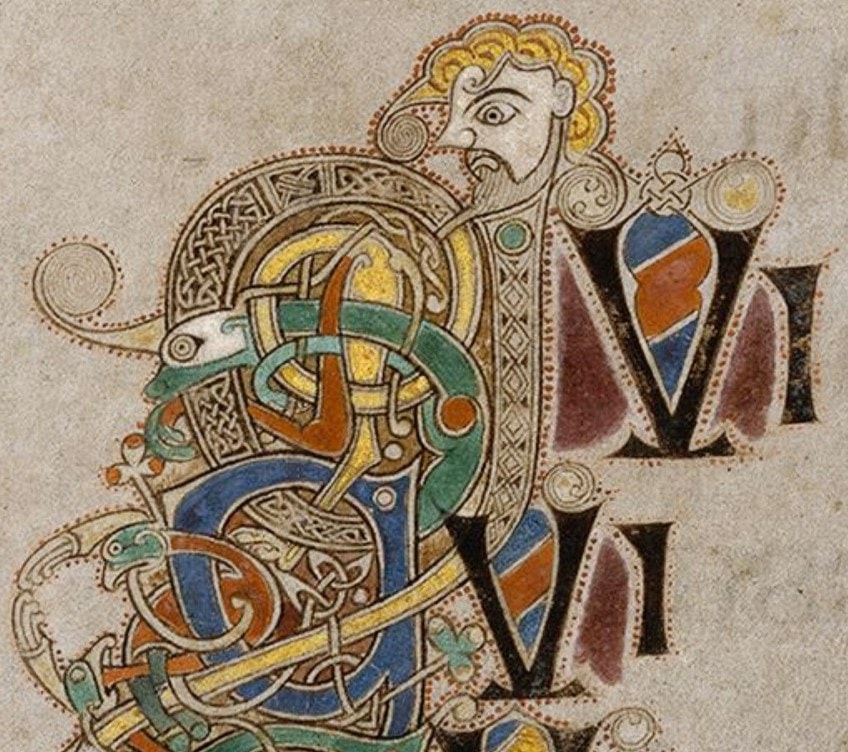
The book is a prime example of the Insular art style and period. This movement was prevalent between 600 CE and the early 1000s in England and Ireland, and its artworks were often produced in monasteries. It was the result of a merger between Celtic and Anglo-Saxon art styles, and is characterized by the density and creativity in its representations.
Celtic art displayed a love for spirals, geometry, and the use of interlaced patterns, which is said to have been influenced by Coptic and Roman art styles.
There has been some controversy regarding the Christian and pre-Christian distinction in the history of Celtic knots. It makes little sense that the Celts only began producing knots during Christianization, but this is the period that contains the only written historical record of their development. For this reason, many take the 400s as the starting point of Celtic knots, but as mentioned, it is possible that the Celts produced knots well before then.

The rise of Christianity in the area impacted Celtic knot designs and styles. Before then, it was believed that Celts focused more on stepped, spiral, and key designs. After the proliferation of Christianity and the establishment of Insular art around 600 CE (a fusion of Celtic and Anglo-Saxon art traditions), Celtic knots began to take on more interlaced, knotted, and looped styles. This change in design makes their history especially complicated.
After the conquest of England in the 1060s by William I, Celtic knots quickly fell out of demand. This would be the case until the mid-1800s, when they enjoyed a sudden revival as objects of study and media fascination. Ever since, Celtic knots have received much attention and appreciation from people worldwide.
So, where might you find Celtic knots today?
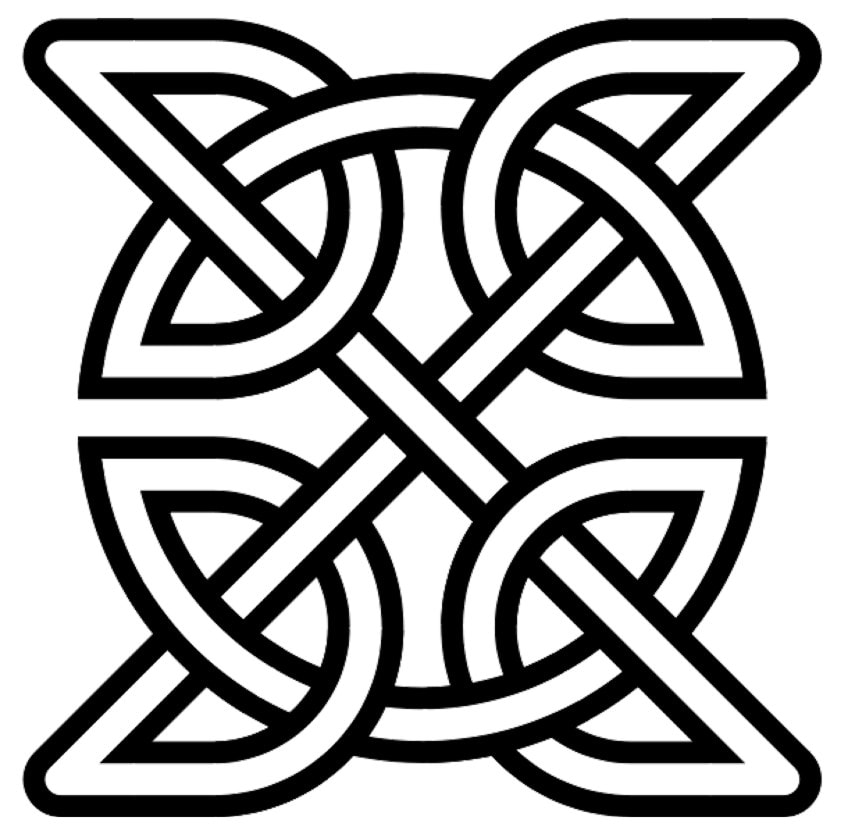
Where Can You Find Celtic Knots Today?
Celtic knots are visible all over the world today and are widely celebrated symbols by people of different cultures and creeds. It makes sense that these images would thus become some of the most recognizable designs in both history and the present. This segment discusses some of the main forms in which Celtic knots appear today.
Despite their popularity and ubiquity, it is important not to take Celtic knots for granted and to develop an understanding of their symbolic meanings.
One industry that has recognized the symbolic value and power of Celtic knotwork is tattoo art. Celtic knots have become some of the most popular tattoo designs and are appreciated for their never-ending loops, associated with oneness and unity. To symbolize strength or protection, people may get tattoos of Shield or Dara knots, while a newlywed couple might choose to get tattoos of a love knot. The various meanings offered up by Celtic knots allow for people to choose a design based on what they may be going through, or what they hope to achieve in their lives.
In this sense, the Celtic knot can also be symbolic of one’s personality or character. Likely the most tattooed Celtic knot, the Celtic cross has enjoyed much popularity as a tattoo over the years. It is commonly tattooed for religious reasons, as people represent wish to represent their personal connection to their faith and to the spiritual realm. Since Celtic knot tattoo designs have become so common, many fail to realize that these are actually historical artifacts, which make their design all the more appealing.
Possibly even more popular than Celtic knot tattoos are pieces of jewelry and other accessories that bear their ancient symbols.
On necklaces, bracelets, anklets, or earrings, Celtic knot jewelry can be found just about anywhere. One major trend in Celtic knot design is the endowment of wedding rings with Celtic knots, as couples look to fortify their love and bond in the unbreakable and eternal design styles of Celtic knotwork.
We also encounter Celtic knots in our daily environments. The Celtic cross is commonly seen on church facades but other Celtic knots can be found on all types of buildings. Celtic knot designs can also be found on tombstones and manuscripts such as the Book of Kells and the Lindisfarne Gospels. Around us, we may find people wearing Celtic knots as symbols on their clothes, out of personal preference, or as part of their working uniforms. Similarly, many companies design their logos based on Celtic knot patterns. This is why we often encounter Celtic knots on everyday objects such as boxes, ornaments, and pieces of cutlery.
Most importantly, Celtic knots are often used to represent Irish heritage.
Celtic knotwork occupies a special space in Irish history and culture, which can be seen in the presence of Celtic knots in Irish national spaces and emblems. These become especially visible on holidays that celebrate Irish heritage. This significance of Celtic knots applies both in Ireland and across the world, for all people with Irish roots or relations. One such example is the Irish-American community, to whom Celtic knots are also highly important cultural artifacts and symbols. The overall influence of the Celtic knot was tremendous since it was also found in Byzantine art and architecture, including Ethiopian art, Russian illustrations, and Islamic art.
Exploring the Different Types of Celtic Knots
There are nine main types of Celtic knots, which appear in a variety of forms today. At a quick glance, these types may look similar, however, they are highly unique and exhibit different Celtic knot meanings. This section will help you understand the nine different types of Celtic knots and the ancient Celtic symbols they communicate. Between the 8th and 12th century, Celtic crosses were known for employing ancient Celtic symbols as part of their designs, and as such, were also used by monks to educate people on the Gospel.
Celtic knots generally fall into four pattern categories, which include interlace designs, step patterns, spirals, and basic knots.
Interlace patterns depict the interconnections of life by looping strands and ends, whereas step patterns represent growth and life’s continuity in the form of steps. Celtic spirals are categorized separately for their rounded edges and specific meanings, but all other designs fall into the broad category of basic knots. The basic knot is the most common base form for Celtic knots, consisting of three or four intertwining cord plaits.
The Trinity Knot
The most famous of all Celtic knots, the Trinity knot, is organized into three intertwined ovals, arranged to be pointing up, right, and left. Sometimes, Trinity knots are surrounded by an enclosed circle to symbolize eternity. Archaeologically, symbols like the Trinity knot are called triquetra and similar knots have been discovered all over the world. But, what does this well-known symbol actually mean?
In Celtic culture, it was common to think of the world as made up of trios, or trinities. Whether they symbolized time (the past, present, and future), life (birth, death, and rebirth), or religion (the father, son, and holy spirit), it was believed that the world could be understood in threes.
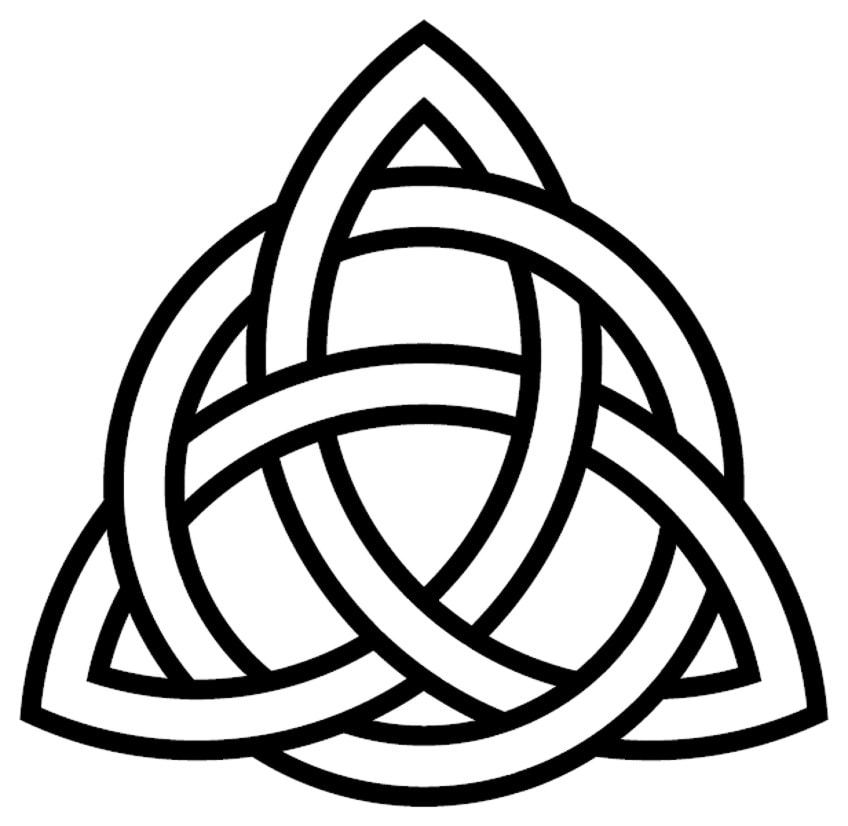
This is reflected across Celtic knotwork but nowhere more visible than in the Trinity knot. It resembles unity and interconnection between the distinct realms of nature, humanity, and spirits. This piece of Celtic knotwork displays a powerful and moving simplicity, of which many fans of Celtic designs will agree.
Today, numerous companies, groups, and organizations have adopted the Trinity knot as the main inspiration for their logos and coat of arms.
Thousands around the world have been inspired to get tattoos or wear accessories depicting the Trinity knot because of the deeper meaning it symbolizes. It has also appeared often in media, especially in films and television shows. Interestingly, similar versions of the Trinity knot have been found in Anatolia (present-day Turkey) and even Japan, where it is commonly understood to symbolize eternal love.
The Trinity knot symbol quite clearly held a rich meaning in the ancient world, regardless of the specific style it appeared in or where it originated from. Today, it remains the most recognizable Celtic knot out of all the nine main styles.
If you flip two Trinity knots and connect them at their arches, you end up with a Serch Bythol knot, which is meant to symbolize a strong love bond built upon the unity of mind, nature, and spirit, expressed by the two Trinity knots.
The Motherhood Knot
A variation of the Trinity knot is the Motherhood knot, of which there are around three different variations. This type of Celtic knot was derived from the original ancient knot designs and have since evolved into variations, commonly found in tattoo designs.
The traditional symbols for motherhood include two hearts joined with each other without any regions of separation.
One can also expect to spot a motherhood knot design with up to six hearts interlinked, which signifies the number of children and the bond between a mother and her children. The knot design also reflects the unbreakable attachment and love that a mother experiences from the minute her child is born.
The Love Knot
One of the oldest examples of Celtic knotwork is the love knot, which is quite direct in terms of its meaning. As seen in its design, this Celtic knot symbolizes a close bond shared between two people. Specifically, it refers to the unbreakable bond of trust shared between lovers. The Celtic love knot interconnects in a way that displays two heart symbols, one facing up and the other down.
If you look even deeper, you might be lucky enough to find another two hearts.
It is likely that these knots were exchanged between couples in Celtic communities, similar to how we exchange wedding rings or other objects of affection today. Sometimes, the symbol can be seen at romantic or family events such as anniversaries, graduations, or weddings. An alternative name for the love knot is Anam Cara, which describes the concept of a soulmate in ancient Celtic culture.
Soulmates or “soul friends” were integral to Celtic spiritual development for both individuals and the community at large. Brigid of Kildare, one Ireland’s patroness saints, once said of Anam Cara, that “anyone without a soul friend is like a body without a head”. The importance of cultivating this type of relationship in Celtic spirituality cannot be understated.
The Dara Knot
From a language perspective, the Dara knot was derived from the term doire, which translates to “an oak tree” in Irish. It is not surprising to discover that the meaning of the Dara knot is associated with strength and fortitude. The strands of the knot are interlaced in a complex, busy pattern, and organized in a circular shape. These symbolize the interconnected roots of the oak tree, from which the knot acquired its name.
Like the oak tree, humans also establish roots in the places we live, which to the Celts, symbolically provided strength and support for daily life.
Trees were important spiritual objects in Celtic culture. The tree and its root systems represented fertility and growth, and were seen as a means of connecting with ancestors and the spiritual world. From this, it is quite clear that Celtic knot meanings “run deep”.
The Sailor’s Knot
Keeping up with the element of never-ending and closed loops, the Celtic Sailor’s knot is another famous Celtic knot that consists of two thick cords with horizontal, geometric interlacing. Like the Trinity knot, this motif is widely popular across tattoo design and jewelry.
The Celtic knot meaning here does not symbolize a natural object like the oak tree. Rather, the meaning of the Sailor’s knot is defined by the conditions in which the knots were designed and made.
It has been said that this Celtic knot was produced by sailors while away from home on long journeys, which was a common experience for Celts who traveled Europe. This is precisely where the Sailor’s knot gets its name from. In this context, Sailor’s knots can be understood as symbolizing loyalty, friendship, and love, especially across the challenges of distance, time, and memory. Like the love knot, the design reveals the unbreakable character of the relationship it is meant to represent.
Not knowing whether you would see your loved one again, Sailor’s knots helped keep human bonds tight in a time when communication was a lot more difficult than it is today.
The Shield Knot
Remember how the Dara knot represented strength and rootedness? The Shield knot similarly symbolizes protection and safety. Its name and design as a shield of war make sense in this regard. The Shield knot was a powerful symbol in Celtic culture, and was a common sight on the battlefield, in places of worship, or in homes for the sick. If not warding off enemy armies, the knot was also used to protect mortals from evil spirits.
The tight and organized unity displayed in its pattern design contributes to the strength associated with a Shield knot.
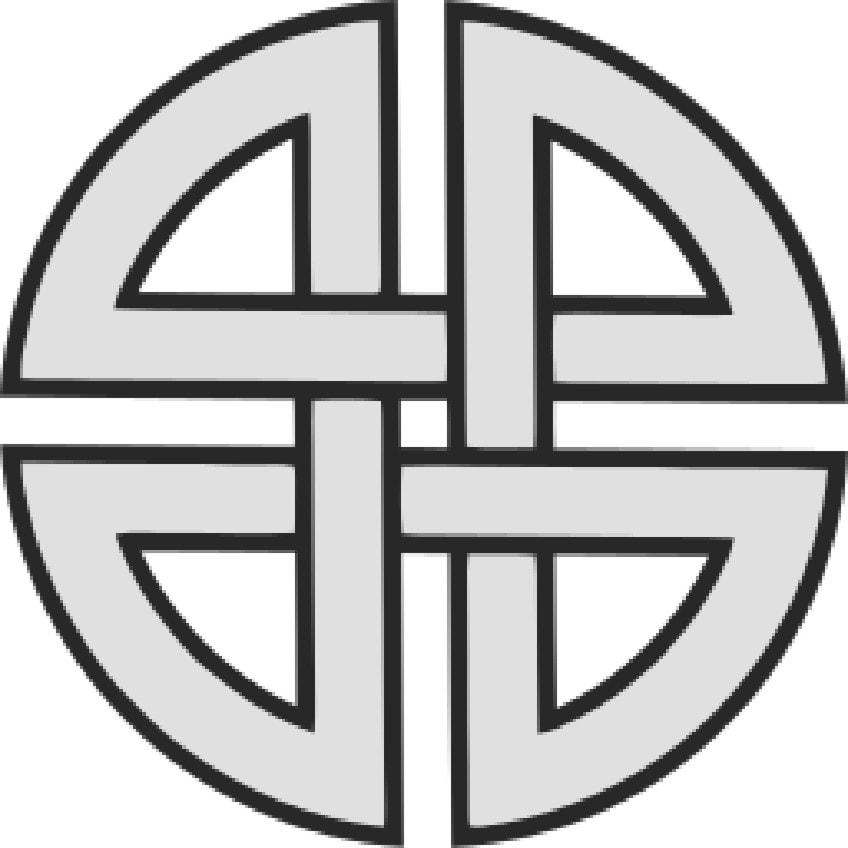
The Celtic Shield knot can appear in a number of different styles but its core design is always at the heart of the knot. It embodies closure within four strict corners, regardless if its interconnection points are contoured sharply or softly, which is merely a stylistic preference. Because of its ability to ward off evil, the Shield knot can be found across a wide variety of contexts. Shield knots are also recognized by their distinct corners, bound in a rigid pattern, such that it is unbreakable. The four distinct corners of the Shield knot resemble a shield, which is a recognizable marker for physical protection.
Similar knots have also been discovered in ancient Mesopotamia.
The Solomon’s Knot
Variations of the Solomon’s knot have been seen across many ancient civilizations. Despite its simple design, it is one of the most historically significant knots in human history. Solomon’s knots are held in especially high regard today in Yoruba culture in Nigeria and in Jewish traditions, but have also consistently been appreciated by various cultures throughout history. Sometimes referred to as “Solomon’s seal”, this knot gets its name from the ancient King Solomon and from sites where many examples of the knots have been found, namely in synagogues.
It is important to note that mathematically, the Solomon’s knot is not actually a knot but a link. However, this distinction does not stop people from associating it with Celtic knotwork in general.

For the Celts, the Solomon’s knot represented love and unity, much like other Celtic knots. This is physically represented by the enclosed and interrelated patterning of the cords. At a more specific level, it has been said that this unity was expressive of the relationship between man and the divine realm. Because the knot has no beginning or end, it exemplifies continuity and eternal return.
Because this type of knot has appeared across so many different cultures in history, Celtic variations are sometimes referred to as Foundation knots.
The Spiral Knot
The Celtic Spiral knots are some of the oldest and most unique examples of Celtic knotwork available. Again, we note the presence of three interlaced bodies, although the spiral knot differs from the Trinity knot with its spiral corners, instead of fixed edges and points. The Celtic Spiral knot is recognized as a three-sided knot, which dates as far back as 3,200 BCE. Similar spirals in other civilizations, sometimes referred to as triskele, have also been discovered, but Spiral knotwork is most often associated with the Celtic civilization.
The spiral pattern can take on a number of Celtic knot meanings.
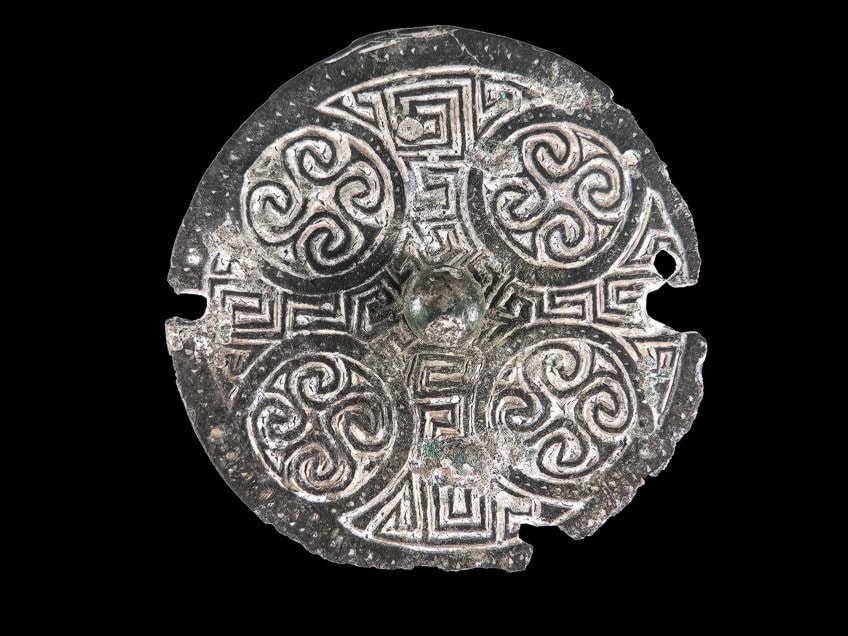
Elementally, it symbolizes the three worlds of nature best understood at that time, encompassing earth, water, and fire. Philosophically, the Spiral knot speaks to continuous growth and movement throughout life and beyond it. Since the entire knot usually consists of a single strand, we can assume that this was a highly personal Celtic knot, meant to be held by individuals and symbolized the unity of their own spirit and life journey.
Over the years, numerous religious and esoteric meanings have been attributed to the Spiral knot symbol, beyond the original meanings embedded in it by the Celts. Spiral knot motifs have also been highly popular items of self-stylization and artistic inspiration since the 1800s.
The Celtic Cross
Although rarely thought of as a knot pattern, the Celtic cross is a widely familiar symbol and forms part of the larger Celtic knot family. It is designed into four semi-circles that are intersected across a central axis. Today, it appears in a variety of forms and is a very popular tattoo design. While there are loose ends to the cross, the style of closed loops defines the circular section at the center, and for this reason, is maintained by many as a closed-loop knot.
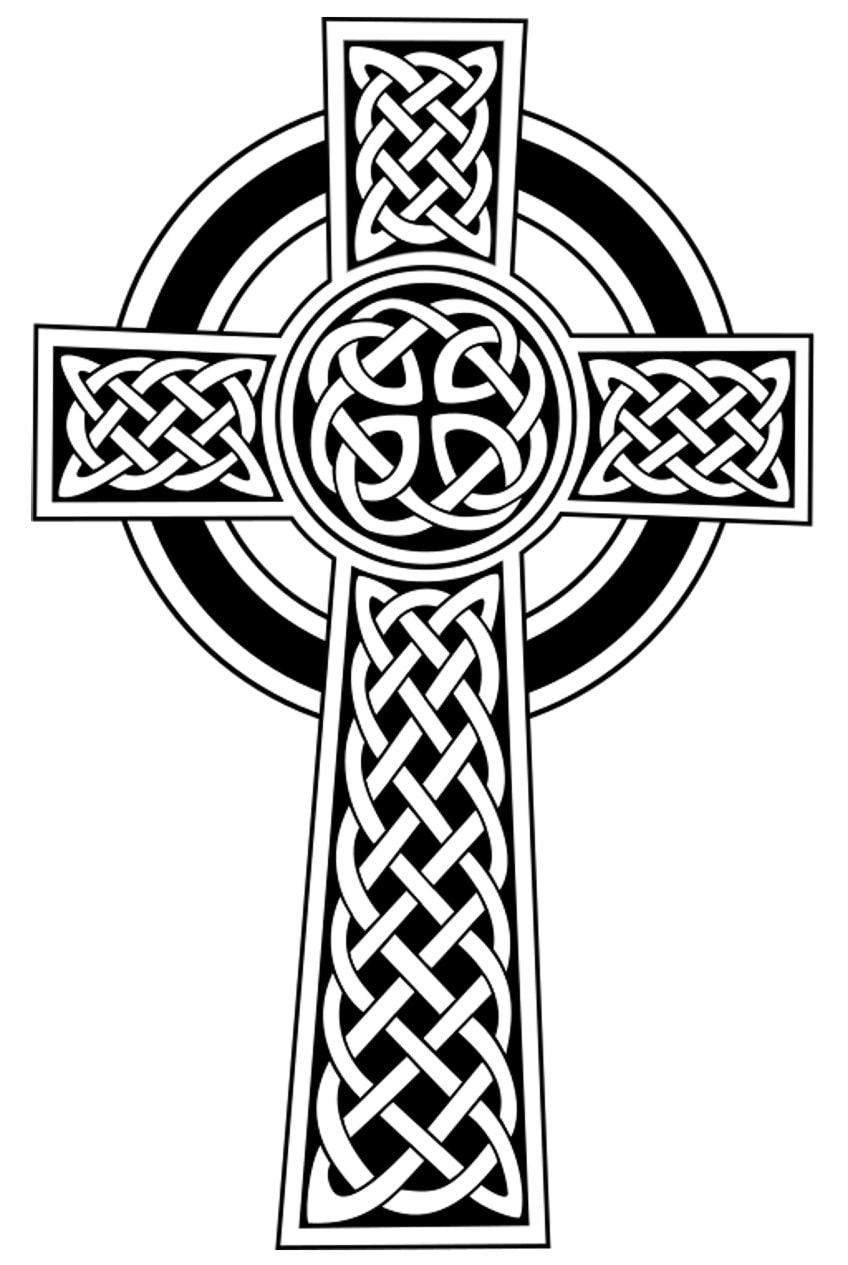
The cross holds different meanings in the Celtic and Christian traditions. Some believe that the design was introduced by St. Patrick when first integrating Christianity in the region, but some historians suggest that it was prevalent in Celtic cultures some time before then.
Regardless of debates about its origin, we know that this symbol resonates deeply with many people situated not only in England and Ireland, but across the globe.
It is unique in its portrayal of four points instead of three (as had been common in Celtic knotwork), which have been said to represent the cardinal points (North, South, East West), the seasons, elements, or a general sign of divine spiritual connection. Today, it is a common sight on public monuments, places of worship, and gravestones. This is, of course, alongside its prevalence in jewelry and religious imagery.
After reviewing the history of Celtic knots and their various symbolic meanings, it is fair to state that they are an art form in themselves. These striking representations of the continuity of human life and the many connections we share with each other continues to inspire many who admire the intricacies of Celtic art.
Frequently Asked Questions
Where Did Celtic Knots Come From?
Celtic knots and their ancient symbols originated in Southern Gaul and Northern Italy, after which they were widely recognized in Ireland as important Celtic symbols.
Are Celtic Knots Pagan?
Celtic knots have been traced to the period before the Middle Ages and is often compared to symbols such as the infinity sign, which reflects infinite bonds. However, Celtic knots are also grounded in Paganism, with their original meanings lost to history.
What Do Celtic Knots Symbolize?
Celtic knots are available in a variety of styles and designs that hold different symbolic meanings. Most Celtic knots display continuous loop patterns that symbolize connection, relationships, harmony, and unity. These loops intersect as part of a larger image, sometimes framed in a circle to produce a single complete unit symbolizing unity among people, God, and nature.
Why Is It Important to Understand Celtic Knot Symbols?
It is important to foster an appreciation of the symbolism used in Celtic knots since they are historical aspects of Irish and English culture that reflect their regional belief systems. To use a Celtic design without understanding it can illustrate a disregard and disrespect for the culture from which it originated.
Armin Kific is a social and political researcher and writer based in Pretoria, South Africa. He completed a degree in Political Science with majors in History and Philosophy in 2020 and has since completed an Honours in Anthropology and History. He is also currently pursuing a Master’s degree in Social Sciences from the University of Pretoria. Armin’s knowledge of the arts spans various mediums, and he is always looking for ways to marry art with social science. In 2021, he produced a short documentary film about the often-forgotten South African soul star Mpharanyana, integrating history, music, photography, and film. Armin is well-versed in art history, especially in the fields of political artwork and ancient artifacts. He enjoys exploring art history sources for information that has been lost or overlooked. He is also trained in biographical writing.
His favorite art movements include baroque, surrealism, and neoplasticism. Armin is an ardent supporter of indigenous art in South Africa and is involved in an organization that looks to uplift South African artists following the challenges of Covid-19. By writing for ArtInContext, Armin continues to cultivate his artistic creativities and unite perspectives between art and society.
Armin has been working for artincontext.org as an author and content writer since 2022. He writes about the topics of art history, specializing in political artworks and ancient artifacts.
Learn more about Armin Kific and the Art in Context Team.
Cite this Article
Armin, Kific, “Celtic Knot – The History and Symbolism Behind Celtic Knots.” Art in Context. August 22, 2022. URL: https://artincontext.org/celtic-knot/
Kific, A. (2022, 22 August). Celtic Knot – The History and Symbolism Behind Celtic Knots. Art in Context. https://artincontext.org/celtic-knot/
Kific, Armin. “Celtic Knot – The History and Symbolism Behind Celtic Knots.” Art in Context, August 22, 2022. https://artincontext.org/celtic-knot/.



